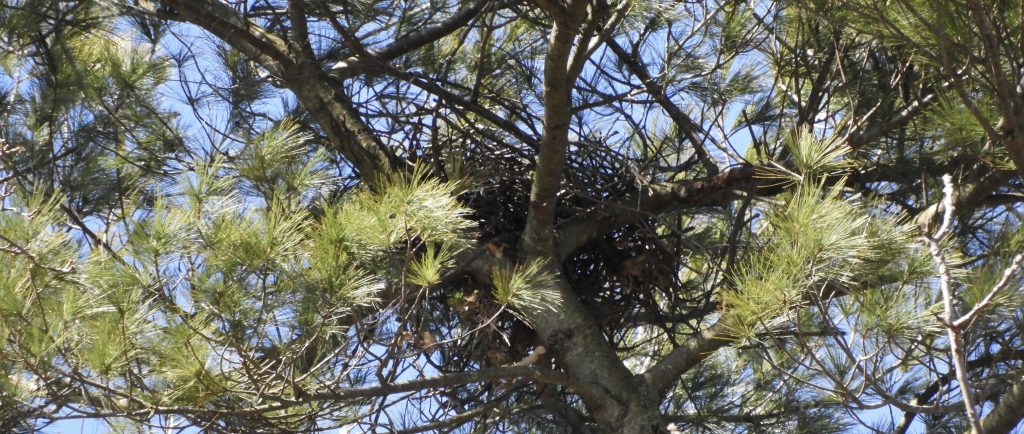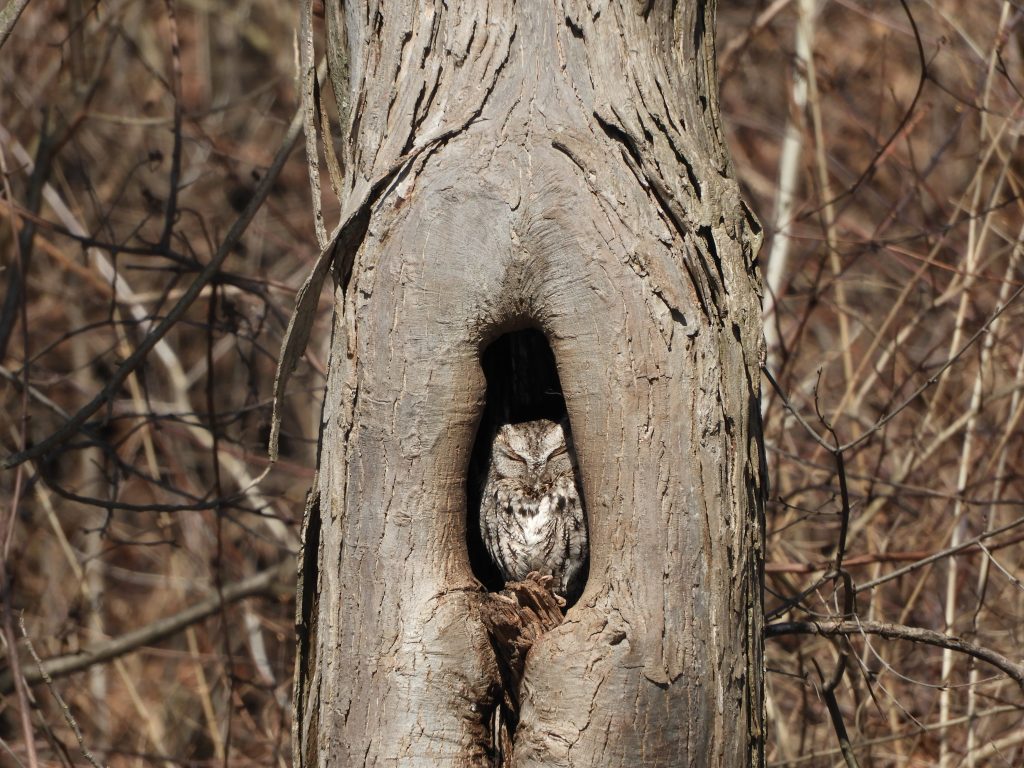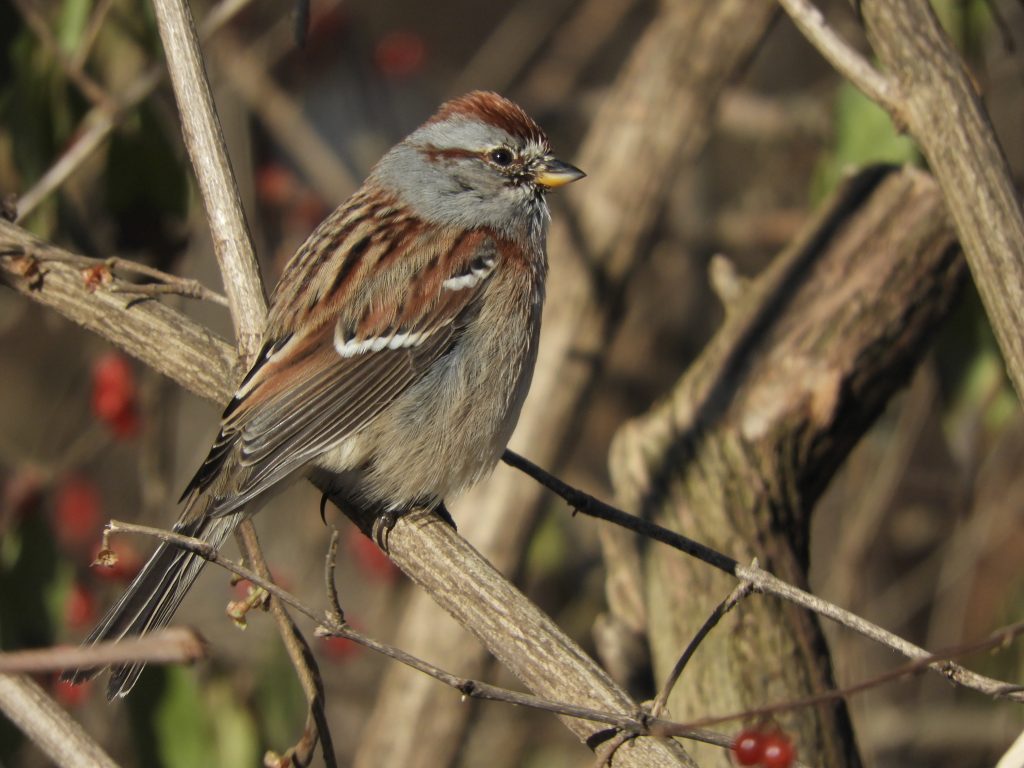
March 27. 2025. Hendrie Valley. Royal Botanical Gardens, Burlington, ON. Canada. Another chance golden day, too good to waste on the trappings of urban living. Far better spent looking for birds; and where better than my favourite valley.
I was hardly out of my car and could hear American Robin song and Blue Jay screeching. Black–capped Chickadees were pleased to see me thinking I’d come with peanut handouts but were wrong. The tally for the day built quickly with Dark–eyed Junco, White–breasted Nuthatch and Northern Cardinal, all regulars and to be expected. And, then a surprise.
As I stood listening and watching, absorbing this bit of early spring, an unfamiliar scratchy bark made me pay attention. Looking up I saw a crow-sized bird moving through the open treetops and almost immediately knew it was either a Cooper’s or Sharp-shinned Hawk, they’re closely related and look-alikes except for size differences . Well, it was a Cooper’s Hawk, and I watched it make its way to the top of a White Pine where it had a nest – or at least the start of one, an untidy platform of twigs. The thing about Coooper’s Hawks, like many predators, is that they have an aura of noble bearing about them, at least in our minds. Coooper’s dominate as predators of smaller birds and rodents which they often capture by ambush or high-speed chase, nobility being irrelevant. Over the past few decades, Cooper’s Hawks along with the Merlins have become increasingly common nesters in our suburban and urban landscapes. It was almost bound to be My Bird of the Day, not much else comes close as an attention-getter at this time of year.

As winter’s ice has faded, Red–winged Blackbirds, Canada Geese, Mallards, Trumpeter Swans, Belted Kingfishers and Wood Ducks have started staking out their little piece of the valley and I was pleased, though not surprised, to see an Eastern Screech–Owl sunning itself at its arboreal doorway. I first saw a Screech Owl at that roosting/nesting spot in April 2018, and it or its roommates have been there since, and who knows for how long before.

To those already noted above I added Song, White–throated, and American Tree Sparrows. Two woodpecker species, Downy and Red–bellied Woodpeckers, a low drifting Turkey Vulture, a Red–tailed Hawk circling way up and I spotted another Cooper’s Hawk hunting treetops.
My two-hour hike ended up with twenty-eight species, good enough for March and certainly good for the inner man.